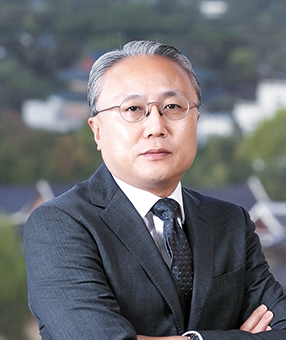On May 10, 2022, President Yoon Suk-yeol was inaugurated as the 20th President of Korea and started his 5-year term of office. The Presidential Transition Committee (the “Transition Committee”), which had been preparing the new administration’s main policies, announced on May 3, 2022 the national vision and 6 objectives, as well as 110 national agenda items (the “National Agenda”) to accomplish them.
For the maritime sector, the new administration presented (i) detailed plans to enhance the competitiveness of the Korean maritime logistics industry by expanding the shipping and logistics hubs and establishing smart hubs, along with various other plans to (ii) foster new energy industries, including offshore wind farms, and (iii) protect Korea’s maritime territories and sustainably manage the ocean.
Key details of the National Agenda for the maritime sector are as follows:
Establishing the World’s Leading Maritime Transportation & Logistics System
As the national objectives for the maritime logistics industry, the Transition Committee proposed (i) enhancing the competitiveness of the Korean maritime logistics industry by expanding the shipping and logistics hubs and establishing smart hubs and (ii) capturing new markets by building a digital maritime traffic network, and by developing and supplying autonomous and eco-friendly ships.
Accordingly, the new administration plans to provide incentives to vessel investors with an aim to enhance Korea’s shipping capacity, as well as expand public sector support and investments to increase the order volume of domestic vessels. Additionally, in order to enhance Korea’s overseas shipping capacity, the new administration will endeavor to secure additional overseas port terminals and joint logistics centers. Furthermore, starting from 2023, the new administration will assist major SME associations representing each industry in entering into long-term container shipping contracts to ensure stable delivery of SMEs’ products. Simultaneously, the new administration will establish a comprehensive welfare system to support and protect sailors, who serve as the cornerstone of the maritime industry.
Moreover, to create hub ports, the new administration plans to transform the Port of Gwangyang into a fully automated port and establish new ports in Busan and Incheon by 2026. In particular, the new administration will formulate and implement polices to strengthen the competitiveness of Korean ports by expanding ship repair services and LNG bunkering services and developing sea routes and hinterland complexes.
With the aim of leading the future ship market, the new administration is expected to implement policies to develop autonomous ship technologies and core technologies for carbon neutral vessels by 2025. In addition, to promote the introduction of eco-friendly ships, the new administration will subsidize up to 30% of the ship price when purchasing an eco-friendly ship.
Furthermore, the new administration will designate sea lanes by each type (e.g., wide lane, branch line or port entry/exit route) across the nationwide coastal areas to build a maritime traffic network and shift to the digital maritime traffic management system by 2027. By doing so, the new administration will support Korean companies to capture the digital maritime traffic service market.
Establishing Energy Security and Creating New Energy Industries and New Markets
To establish energy security, the new administration plans to (i) reasonably adjust the energy mix considering the harmony between nuclear energy and renewable energy and (ii) revise plans to accomplish the NDCs in the energy, industry and transport sectors.
The Transition Committee stated that the new administration would (i) advance the solar and wind power industries, (ii) innovate the energy demand management with highly efficient and low-consuming energy and (iii) develop new energy and hydrogen industries in conjunction with industry 4.0 technologies. Accordingly, the new administration is expected to conduct reviews to establish a stable production and supply infrastructure for clean hydrogen and to advance renewable energy industries including solar power and wind farm industries. Although concerns have recently been raised that the renewable energy policy may change in line with the new administration’s transition away from the nuclear phase-out policy, it is anticipated that the continued utilization of nuclear energy will not significantly change the renewable energy policy, whether for producing clean hydrogen or meeting the 40% NDC target. While renewable energy’s share in the total energy mix will decrease, it is expected that the total volume of renewable energy that can be produced will not change significantly. Considering that the current volume and share of renewable energy in the NDCs are excessively high to the extent that they are infeasible to implement, the new administration is anticipated to adjust the NDCs to a more feasible level.
Furthermore, with regards to offshore wind farms, the new administration stated that it would establish a mutually beneficial framework for offshore development activities. Thus, the new administration is anticipated to implement institutional improvements to resolve issues relating to reckless site selections by small wild farm developers public acceptance within developers’ consultation with fishing communities (public acceptance issue).
Furthermore, the new administration plans to introduce the “water use impact assessment” scheme. The fact that such scheme will follow the previous administration’s “maritime environment impact assessment” laws implies that the new administration will simplify and rationalize regulations on offshore wind power.
The new administration will also expand the scope of resource security to hydrogen and core minerals, as well as implement plans for enhancing procurement stability, including restoration of the ecosystem for overseas resources with a focus on the private sector.
Strengthening Capabilities to Protect Ocean Territories and Sustainable Ocean Management
The new administration aims at (i) building a robust sea power such that Korean citizens can use the sea with ease of mind and (ii) creating a clean and safe ocean and coast for the enjoyment of future generations. To this end, the new administration plans to (i) reorganize the Fisheries Management Service into the Fisheries Management Headquarters and (ii) deploy additional large fishery patrol vessels and police watercrafts to strengthen the capabilities for managing maritime territories in preparation for threats from neighboring countries.
Under the objective of expanding large watercrafts to the level capable of ensuring the checks and balances against neighboring countries’ ocean powers, the new administration plans to (i) deploy additional large patrol ships at three strategic zones where the maritime boundaries with neighboring countries have not been defined and (ii) establish the maritime domain awareness platform to prepare for potential threats to Korea’s ocean sovereignty.
To this end, the new administration will expand the scope of maritime surveillance by (i) introducing additional remote marine drones on a phase-by-phase basis and (ii) establishing infrastructure for collecting maritime information, such as a satellite center that collects and processes satellite data related to observations, communications, and search and rescue. At the same time, the new administration plans to (i) compile big data by integrating various data collected from patrol ships and aircraft satellites and (ii) establish a system to effectively analyze, integrate and utilize them.
Furthermore, to protect citizens’ life and property from various maritime accidents, the new administration will ensure the safety of ship navigation by advancing the vessel traffic service via (i) integration of the current 20 vessel traffic service centers dispersed across different areas into five regional centers by 2025 and (ii) increase in the number of control radars from 86 to 107. Moreover, to secure a prompt rescue capability, the new administration will integrate private rescue organizations, currently divided into each field, into the national maritime rescue organization. The new administration also plans to enhance the private sector’s rescue capabilities by providing stronger governmental support, including specialized rescue trainings for private marine rescue team.
In addition, the new administration plans to enhance the mobility of islanders by nationalizing coastal passenger ships by 2025, ensuring the availability of maritime transportation in every island and reducing passenger ship fares for islanders. Moreover, the new administration will also endeavor to secure safety nets for coasts by establishing networks for monitoring typhoons, tidal waves and other disasters on domestic coasts, creating eco-friendly buffer zones on major coasts and constructing ports that are safe against disasters.
Implications
As the blueprint for state administration, the Transition Committee’s National Agenda will be reflected in each Ministry’s policies under the newly inaugurated President Yoon administration and is expected to be finalized as Yoon administration’s own national agenda.
According to the National Agenda announced by the Transition Committee with regards to the maritime sector, the new administration will endeavor to (i) enhance the competitiveness of the Korean maritime logistics industry and (ii) pioneer new markets including those for autonomous and eco-friendly ships. Through such endeavors, it is expected that the total capacity of domestic ships will increase from 89 million tons (as of 2021) to 100 million tons (by 2027), and the number of joint logistics centers from 3 to 8. Moreover, by 2026, a total of 296 ships are expected to be converted into eco-friendly ships. Thus, it is anticipated that the maritime logistics industry will evolve toward expansion of investments in vessels, diversification of container shipping contracts, and full automation and enhanced eco-friendliness of ports and ships.
Similar to the previous administration, the new administration has shown active willingness to achieve carbon neutrality in the energy sector. Especially given that the expansion of renewable energy is an inevitable, worldwide trend, the new administration is anticipated to undertake initiatives to develop the renewable energy industry as well. This will likely increase attention towards the offshore energy sector, including offshore wind farms.
Furthermore, the new administration will expand the scope of maritime surveillance by twice the current level by utilizing advanced surveillance systems, and convert all coastal passenger routes (104 routes in total) into a one-day life zone for round-trip passengers. Moreover, the new administration is expected to take interest in creating a clean maritime environment by reducing the amount of marine plastic waste generated annually by 50%.
The specifics of the foregoing National Agenda on maritime logistics, renewable energy (including offshore wind power), maritime territories and ocean management will be further discussed by the government and the National Assembly in greater detail and depth. Thus, it would be necessary to continue monitoring the discussions that take place among stakeholders and legislative/administrative processes related to policy formulation.
Related Topics







